
| Pricing Model | Per user |
|---|---|
| Free Version | No |
| Free Trial | Yes |
Staying on top of your finances is non-negotiable in 2025. The right finance and accounting software can boost cash flow, simplify tax prep, and automate repetitive tasks. Whether you’re a freelancer, solopreneur, or scaling a business, this guide will help you find the best tool for your unique financial goals.
With so many tools out there, picking the best finance software can be overwhelming. But don’t sweat it, we’ve done the heavy lifting for you. Below, you’ll find the top-rated solutions of 2025.

| Pricing Model | Per user |
|---|---|
| Free Version | No |
| Free Trial | Yes |
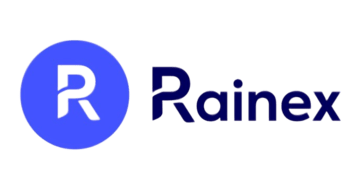
| Starting Pricing | $99/mo |
|---|---|
| Pricing Model | Monthly Subscription |
| Free Version | Yes |
| Free Trial | No |
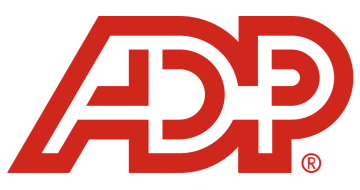
| Starting Price | Contact for pricing |
|---|---|
| Free Version | No |
| Free Trial | No |
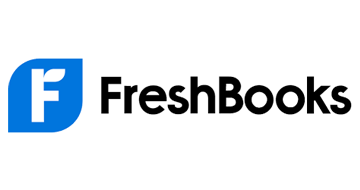
| Starting price | $6/mo |
|---|---|
| Pricing model | Subscriber based |
| Free Trial | Yes |
| Free Version | No |
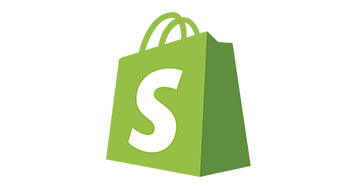
| Starting price | $29/mo |
|---|---|
| Pricing model | Per store |
| Free Trial | 14-day |
| Free Version | No |
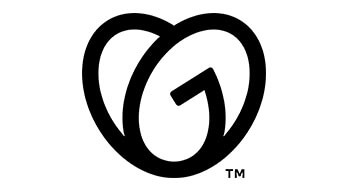
| Starting price | $5.99/mo |
|---|---|
| Pricing model | Per License |
| Free Trial | 30-day |
| Free Version | Yes |
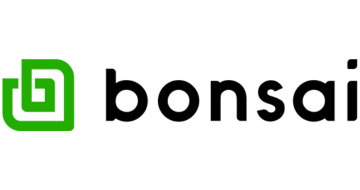
| Starting price | $17/month |
|---|---|
| Pricing model | Per User |
| Free Trial | Yes |
| Free Version | No |

| Starting Price | Contact for price |
|---|---|
| Pricing model | Subscriber based |
| Free Trial | Yes |
| Free Version | No |

QuickBooks remains the best accounting software in 2025, and for good reason. It’s versatile, reliable, and packed with features that make accounting easier.
It offers everything from invoicing and payroll to real-time reporting and tax tools. It’s a perfect match for small to midsize businesses.
As your business scales, QuickBooks keeps up, syncing smoothly with dozens of tools you’re probably already using.
| Pros | Cons |
|---|---|
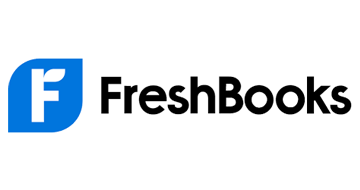
FreshBooks is designed with non-accountants in mind. It comes with a clean interface and smart automation. These features make invoicing, expense tracking, and time management a breeze.
FreshBooks is one of the best finance software for small business since it delivers pro-level tools without the headache of navigating a complicated environment.
| Pros | Cons |
|---|---|
Accounting and finance software is your digital money manager. These tools help businesses track income, manage expenses, and stay on top of taxes without dealing with complex spreadsheets.
Think of it as your all-in-one toolkit for bookkeeping, invoicing, budgeting, payroll, and tax compliance. No more manual number-crunching or second-guessing your cash flow. Just automated processes, clean reports, and accurate records in real-time.
The best part of using these tools is that they scale with you. A good finance software for small business can support all your needs whether you’re freelancing from a laptop or running a startup.
Finance and accounting software simplifies money management by automating common tasks. First, you connect your bank accounts and credit cards so the software can automatically import transactions. Then, it tracks your expenses and income in real-time.
You can easily generate and send invoices to clients, monitor payments, and set up recurring bills. The software also categorizes your transactions like office supplies, rent, or client payments. This way, you always know where your money is going.
Most platforms include dashboards and reports that show your cash flow, profits, and expenses. These help you make smart decisions without digging through spreadsheets.
Here’s why using finance and accounting software is a smart move for any business:
Automation is a major time-saver. Tasks like invoicing, payment tracking, and bank reconciliation happen in the background, cutting hours of manual work.
By importing bank data and categorizing transactions automatically, the risk of human error drops significantly. This leads to cleaner records and fewer headaches during audits.
Dashboards and reports provide a live view of your finances. This helps you monitor income, spending, and profit at any time without digging through spreadsheets.
With visual tools and alerts, you can keep tabs on your cash flow, spot spending issues early, and ensure you have enough on hand for expenses and investments.
Organized records and categorized transactions make it easier to file taxes accurately and on time. Many tools even generate tax reports or integrate with tax filing software.
Finance and accounting software comes with a wide range of features, from basic tools that cover daily tasks to advanced options for growing or complex businesses:
For most small businesses, core features are more than enough to keep operations running smoothly.
1. Invoicing: enables you to create, send, and track professional-looking invoices. It helps you get paid faster and improves cash flow.
2. Expense Tracking: allows you to record and categorize business expenses. It makes budgeting easier and keeps you prepared for tax season.
3. Bank Reconciliation: automatically matches bank transactions with your records. This ensures accuracy and saves time on month-end tasks.
4. General Ledger: this is the backbone of your accounting system. It organizes all financial data in one place, making it easy to generate reports and spot trends.
As your business grows, you may need more robust tools to handle increasing complexity.
5. Payroll: helps automate employee payments, tax withholdings, and compliance with labor regulations.
6. Inventory Management: tracks product levels, sales, and restocking needs. This is especially useful for retailers or e-commerce businesses.
7. Multi-Currency Support: this is a must-have for companies dealing with international clients or suppliers, as it simplifies conversions and exchange rate tracking.
8. Automation: takes routine tasks like recurring invoices or payment reminders and handles them automatically. This way, you have more time.
9. CRM and E-Commerce Integrations: allow you to sync sales data, customer info, and transactions directly with your accounting system. These cut down on duplicate entries and improve workflow.
Here’s how to choose finance software that matches your business needs and goals:
Start by listing your biggest financial pain points. Are you spending hours on invoicing? Do you need better tracking for expenses or more accurate reporting? Knowing your priorities helps you focus on features that solve real problems.
Freelancers and solopreneurs often need basic features like invoicing and bank reconciliation. Larger or growing businesses may require advanced tools like payroll, inventory management, or multi-user access. The size of your team and transaction volume should guide your software choice.
Most platforms offer tiered pricing based on features and users. Don’t overspend on tools you won’t use, but also avoid sacrificing important capabilities like automation, data backups, or customer support just to save money.
Look for intuitive design, mobile accessibility, and helpful tutorials. Complicated software can slow you down or lead to mistakes. Free trials are a great way to test the user experience before you commit.
If you use other tools like Shopify, PayPal, or a CRM, make sure the software can sync with them. Integrations reduce manual entry and streamline your entire financial workflow.
Explore user reviews on trusted platforms like SaasGenius’s review category pages to read detailed reviews on the software. Feel free to check other credible blogs to see what customers say about usability, customer service, and reliability. Then, use free trials to test the features firsthand and see if they fit your day-to-day operations.
Here’s what to do first once you’ve picked your accounting software:
Getting started is easier than it sounds. To set up your software;
In most cases, the software comes with a default setup you can tweak based on your business type.
Look for platforms that offer strong onboarding support. This includes video tutorials, step-by-step guides, and live chat or email help. A searchable knowledge base and active user forum can also be valuable when questions pop up. Good support makes all the difference in getting up to speed quickly.
Once you’re set-up, make it a habit to check your dashboard, reconcile accounts, and update records weekly. Staying consistent from the start helps you avoid surprises later and keeps your finances on track as your business grows.
Many finance and accounting platforms offer both free and paid plans. While free accounting software works well for basic needs, it often comes with limitations that may not scale with your business. Here’s a quick comparison:
| Features | Free Finance Software | Paid Finance Software |
|---|---|---|
| Invoicing | Limited templates and fewer invoices/month | Unlimited invoices and custom branding |
| Expense Tracking | Manual inputs and basic categorization | Automation plus receipt scanning |
| Reports | Basic summary reports | Detailed reports and forecasting tools |
| Users | Usually 1 user | Multi-user access with role permissions |
| Integrations | Few or none | Connects with CRM, e-commerce, and banks |
| Support | Mostly limited to forums and knowledge bases | Live chat, email, or phone support |
| Best for | Freelancers and side hustles | Growing businesses that need advanced features and better support |
When budgeting, don’t just look at the base monthly price. Some tools charge extra for key features like payroll, advanced reporting, or inventory tracking. Others might require paid add-ons or third-party integrations.
You should also factor in setup time, employee training, and potential support fees if you need onboarding help. A plan that looks cheap upfront could end up costing more in the long run if those extras are essential to your workflow. Always check what’s included and what’s not before committing.
Staying ahead means knowing what’s next. Here are the innovations transforming finance in 2025 and beyond:
Today’s accounting tools use artificial intelligence to automate everything from transaction imports to cash flow forecasting. It flags inconsistencies, spots patterns, and helps you stay audit-ready without lifting a finger. According to Mordor Intelligence, AI in the accounting market is expected to skyrocket from $6.68 billion in 2025 to $37.60 billion by 2030. This means that automation is here to stay.
Accounting platforms are no longer just about recordkeeping, they now offer real-time analytics to support smarter decisions. Modern platforms give you custom dashboards that show revenue trends, burn rates, and overdue invoices in one clear view. That means you can react faster, pivot smarter, and plan ahead with confidence.
The rise of remote work has accelerated the shift toward cloud-native software and mobile apps. Today’s accounting software lets you run your books from your phone. Approve expenses at the airport, send an invoice from your couch, or check your cash flow over coffee. This flexibility has become the norm.
With so many powerful tools available, choosing the right finance and accounting software depends on your business size, budget, and feature needs.